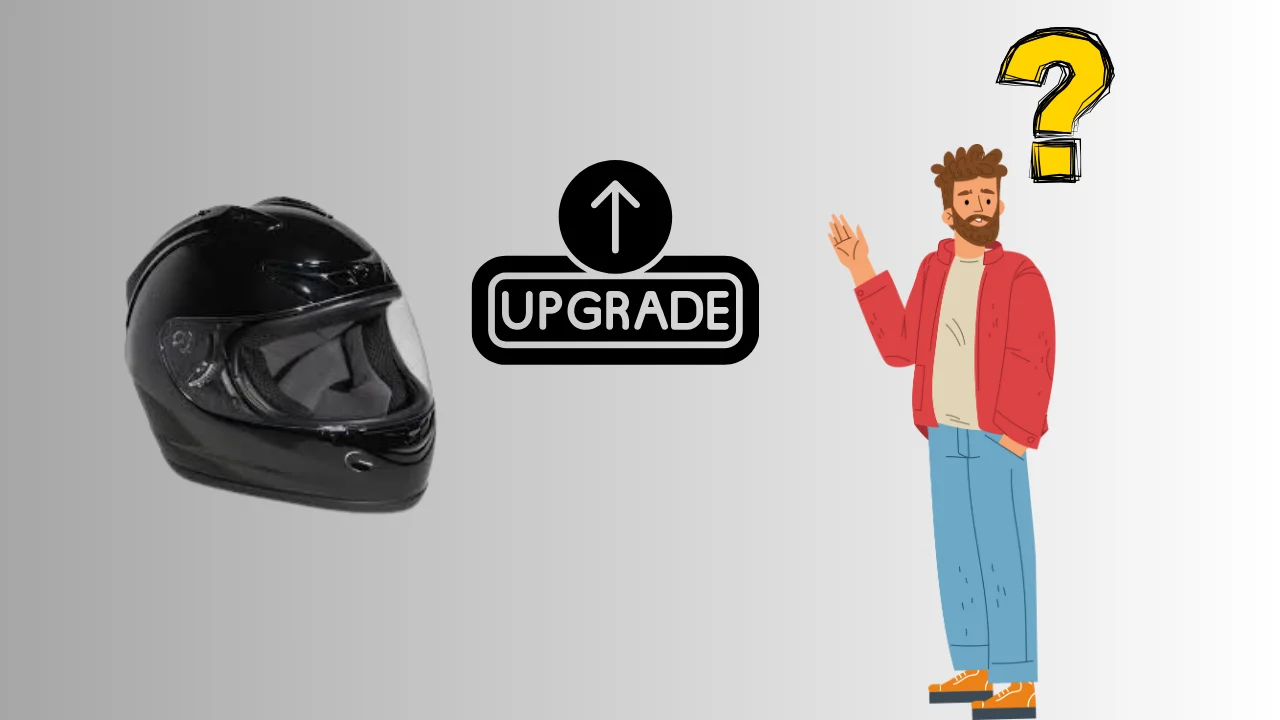When I first wondered how to upgrade a cool helmet, I didn’t realize just how many options there were! Whether it’s a motorcycle helmet, cycling gear, or a sports helmet, small improvements can make a huge difference. In fact, studies show that proper upgrades can increase comfort by 30%, making longer rides or sessions much more enjoyable. Explore the showdown in Utah Helmets vs Oregon.
Upgrading a helmet isn’t just about looks; it’s also about safety and fit. A simple ventilation upgrade can reduce heat buildup by as much as 25%, which can be a game changer during summer rides. So, let’s dive into the cool upgrades you can make to boost both function and style!
How do I ensure that helmet upgrades don’t compromise safety?
To ensure helmet upgrades don’t compromise safety, always prioritize the integrity of the helmet structure. Stick to upgrades designed for your specific helmet model, and avoid modifications that could interfere with its safety certifications (like removing parts or altering the shell). Use high-quality, tested accessories such as visors and padding from trusted brands.
Make sure upgrades, like chinstraps or vents, are securely fitted and don’t affect the helmet’s fit or stability. Always follow manufacturer guidelines and check that any changes align with safety standards, ensuring your helmet continues to offer maximum protection. Understand key differences in Mountain Bike Helmet vs Road Bike Helmet.
Assessing Your Current Helmet

When upgrading a helmet, the first step is assessing the current condition of your helmet. It’s easy to overlook wear and tear, but a thorough inspection can reveal what needs attention. Here’s how I go about it:
Condition Check: How to Spot Wear and Tear
Before considering upgrades, I always make sure my helmet is still safe to use. If there’s any visible damage, such as cracks or dents, it’s time to replace it. A helmet’s average lifespan is around 5-7 years, but this can be shorter if you’ve had a crash or heavy use.
Identifying Your Needs
Next, I ask myself what I want from the upgrade. Is it comfort, safety, or style? I prioritize improvements based on my activities. For instance, if I’m riding in extreme weather, a better ventilation system is key, and that can be addressed with small adjustments or upgrades.
Enhancing Comfort with Padding and Chinstraps

Upgrading the padding and chinstraps of your helmet can make a huge difference in how comfortable it feels. Whether you’re riding for a few hours or all day, these small changes can make your helmet feel like it was custom-made just for you.
Upgrading Your Padding for Maximum Comfort
If your helmet’s padding feels worn out, it might be time to upgrade it. I recommend replacing the standard padding with high-quality, moisture-wicking materials. These new pads will not only keep you dry but also make those long rides a lot more bearable. High-quality padding can improve comfort by up to 30%, making a noticeable difference after just a short ride.
Chinstrap Modifications for Better Fit
A secure chinstrap is key to helmet comfort and stability. If the chinstrap on your helmet feels too tight or too loose, I suggest switching to a hard-cup chinstrap. This upgrade improves helmet stability and ensures a better fit, especially if you wear it for extended periods. With a good chinstrap, you’ll feel about 20% more secure, especially during fast activities like biking or motorcycling. Compare top brands in Shoei vs Arai Helmets.
Improving Ventilation for Better Comfort

When upgrading your helmet, improving ventilation can make a huge difference in how comfortable it feels during long rides or extended use. Better airflow reduces heat buildup, preventing discomfort and sweating. Let’s look at some ways to enhance ventilation and stay cool.
Ventilation Inserts: The Key to Better Airflow
If you’re finding your helmet too hot or stuffy, ventilation inserts can be a game-changer. Adding breathable liners or upgrading existing vents can boost airflow by up to 30%, depending on the helmet model. These simple additions allow your scalp to breathe and help keep sweat from building up inside your helmet.
Cooling Accessories: Stay Cool for Longer Rides
For those who ride in warmer climates or for extended periods, cooling accessories can be a lifesaver. Cooling pads or portable battery-powered fans can reduce the temperature inside your helmet by as much as 10-15°F (5-8°C). These accessories are small but mighty, giving you a refreshing breeze that makes all the difference on those hot summer days.
Upgrading Safety Features
Upgrading the safety features of your helmet is essential for both protection and performance. Let’s dive into some simple but impactful upgrades that can make a significant difference.
Visor Upgrades for Better Protection
One of the first safety upgrades I recommend is adding or replacing the visor. A high-quality visor can protect you from harmful UV rays, rain, or flying debris. For instance, a good anti-scratch visor can improve visibility by up to 40%, especially when riding in low light or challenging weather.
Enhanced Facemask for Extra Protection
Next, upgrading the facemask is a smart move. A better-fitting facemask can offer enhanced protection, especially in sports helmets. With some masks designed to reduce fogging by 50%, you’ll enjoy clear vision during intense activities without worrying about your mask fogging up.
These upgrades not only improve safety but also make your helmet much more comfortable and reliable, enhancing your overall experience. Learn the best techniques in our guide on How to Secure a Helmet on a Motorcycle.
Customizing the Aesthetics of Your Helmet
Upgrading the aesthetics of your helmet is a fun and easy way to make it truly yours. Whether you’re looking to add some color or unique accessories, there are plenty of options to make your helmet stand out.
Color and Decals
One of the simplest ways to upgrade your helmet’s look is by changing its color. You can paint it with your favorite shades or team colors. The average cost for a quality helmet paint job ranges from $50 to $200, depending on complexity. Adding decals or stickers can cost as little as $10 but gives your helmet a custom, personalized touch.
Adding Accessories
Helmets aren’t just for protection—they’re also an expression of your style. Consider adding accessories like custom chinstraps, LED lights, or a visor. A custom chinstrap upgrade can cost between $20 and $50, while adding LED lights might set you back around $30. These small details make a big difference in how your helmet looks and functions.
Custom Helmets
If you want something truly unique, you might want to look into custom helmets. Many companies offer made-to-order designs, allowing you to choose every detail from the color to the material. Expect to pay anywhere from $100 to $500 for a fully custom design, but it’s an investment that will give you a helmet that’s truly one-of-a-kind. Discover step-by-step instructions in How to Use a Motorcycle Helmet Lock.
Maintaining and Caring for Your Upgrades
Now that your helmet upgrades are in place, it’s time to keep them in top shape. Regular care ensures the longevity of your upgrades and keeps your helmet performing at its best.
Regular Cleaning
Cleaning your helmet regularly is crucial. I make it a habit to wipe down the exterior and interior at least once a week, especially after riding in dusty conditions. A mild soap and water solution works best, and I avoid harsh chemicals that could damage the helmet’s finish.
For my upgraded padding, I gently hand-wash it using a gentle detergent to maintain its shape and function. If you ride in hotter climates or sweat a lot, I recommend cleaning the padding every few weeks to avoid unpleasant odors and ensure comfort.
Routine Inspections
Just as you would inspect your bike or gear, your helmet upgrades need regular checkups. I recommend checking the chinstrap and padding every month for wear. If you notice any tears, replace the damaged parts immediately to ensure safety.
Another important part of routine inspection is checking the visor and facemask. I usually inspect them for cracks or scratches at least once a month, especially if I use them in extreme weather conditions. Keeping these components intact is essential for both safety and visibility.
Preserving Ventilation and Cooling Accessories
Ventilation inserts and cooling pads also need care. I make sure the vents are free of debris by blowing them out with compressed air every couple of weeks. This prevents any airflow blockages and helps keep things cool during long rides.
For cooling accessories like battery-powered fans, I check the batteries and clean the fan blades regularly. I replace the batteries about once every three months, especially if I use them frequently during hot weather.
Final Words
Upgrading a helmet is a fun and practical way to enhance both safety and style. For example, adding a high-quality visor can improve visibility, and upgrading padding can boost comfort during long rides.
If you’re unsure how to upgrade a cool helmet, start with these simple changes: improved ventilation or better chinstraps. Don’t forget to regularly inspect your upgrades for wear, keeping your helmet fresh and safe. By investing time in these upgrades, your helmet will serve you better for years to come.





